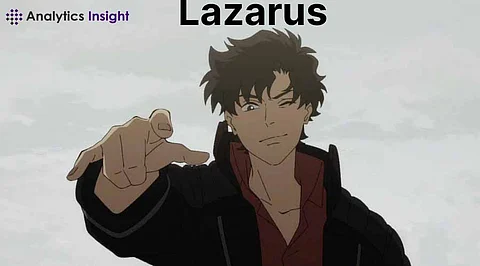

The anime series Lazarus has sparked mixed reactions. Some praise its unique premise and high-energy action, while others find its slow pace and underdeveloped characters frustrating. Created by Shinichiro Watanabe and featuring action choreography by Chad Stahelski, the series blends futuristic drama with adrenaline-fueled combat.
Set in 2052, Lazarus introduces a world where a revolutionary drug, Hapna, eradicates all diseases but comes with a fatal catch—it kills users three years after consumption. The plot follows a covert team tasked with hunting down Dr. Skinner, the scientist behind Hapna, in hopes of reversing its effects. The premise sets the stage for a thrilling adventure, yet the execution wavers between excitement and stagnation.
The high-stakes narrative should create an engaging sense of urgency, but at times, it struggles to maintain momentum. The concept of a miracle cure turning deadly is intriguing, yet the show does not always capitalize on its dramatic potential. While the core idea is strong, its execution leaves room for improvement.
The action sequences stand out as the show's strongest aspect. With Stahelski's expertise, the combat scenes are fluid, intense, and captivating. Axel, the protagonist, moves with remarkable agility, making every fight scene a spectacle.
The choreography brings a level of realism and impact rarely seen in anime, making the battles feel visceral and dynamic. Whether it’s hand-to-hand combat or high-speed chases, the action delivers in every frame. These sequences provide the much-needed energy that counterbalances the slower moments of the show.
There is a diverse range of cast, with characters from different backgrounds adding variety to the team. However, despite their potential, the characters lack depth. Their interactions feel forced, and their personalities fail to leave a lasting impression.
While the series introduces intriguing character designs and backstories, it does not delve deep enough into their motivations or relationships. The dialogue often feels functional rather than meaningful, missing opportunities for emotional engagement. This makes it difficult for the audience to form strong connections with the cast.
While Lazarus is visually polished, it does not push the boundaries of anime aesthetics. Compared to Watanabe’s past works like Cowboy Bebop, the show lacks a distinct visual identity. The animation remains smooth, but it does not elevate the storytelling beyond what is expected from modern anime.
The futuristic setting has a sleek and well-designed look, but it does not stand out as particularly groundbreaking. The environments and character designs serve their purpose but do not leave a lasting visual impression.
Pacing remains a major issue. The urgency of finding Dr. Skinner should create tension, yet the narrative unfolds at a sluggish rate. The stakes are high, but the momentum does not match the gravity of the situation. Instead of a fast-paced thriller, Lazarus often feels like it is meandering, delaying its core revelations.
Certain episodes contain long stretches of exposition or character moments that do not necessarily advance the plot. While world-building is essential, the show sometimes prioritizes atmosphere over forward movement, causing frustration for viewers eager for more immediate developments.
Despite these flaws, Lazarus still holds value for fans of stylish action and futuristic intrigue. The soundtrack, featuring artists like Kamasi Washington and Bonobo, enhances the overall atmosphere.
Music has always been a strong point in Watanabe’s works, and Lazarus is no exception. The jazz-infused, electronic beats complement the cyberpunk setting and intense action scenes, adding a layer of immersion that strengthens the show's appeal.
Lazarus is entertaining but certainly does not compare to Watanabe's best works. This will still make its impact in the anime world if the show improves the pacing and gives proper screen time to all character development.
With an incredible premise, great action scenes, and a killer soundtrack, it just needs to tie its storytelling together to make it really shine. Those who love adrenaline-pumping anime might find plenty to love here, while others may want to wait for the follow-up to see whether the remaining episodes improve on what the show didn't quite get right in this pilot.
